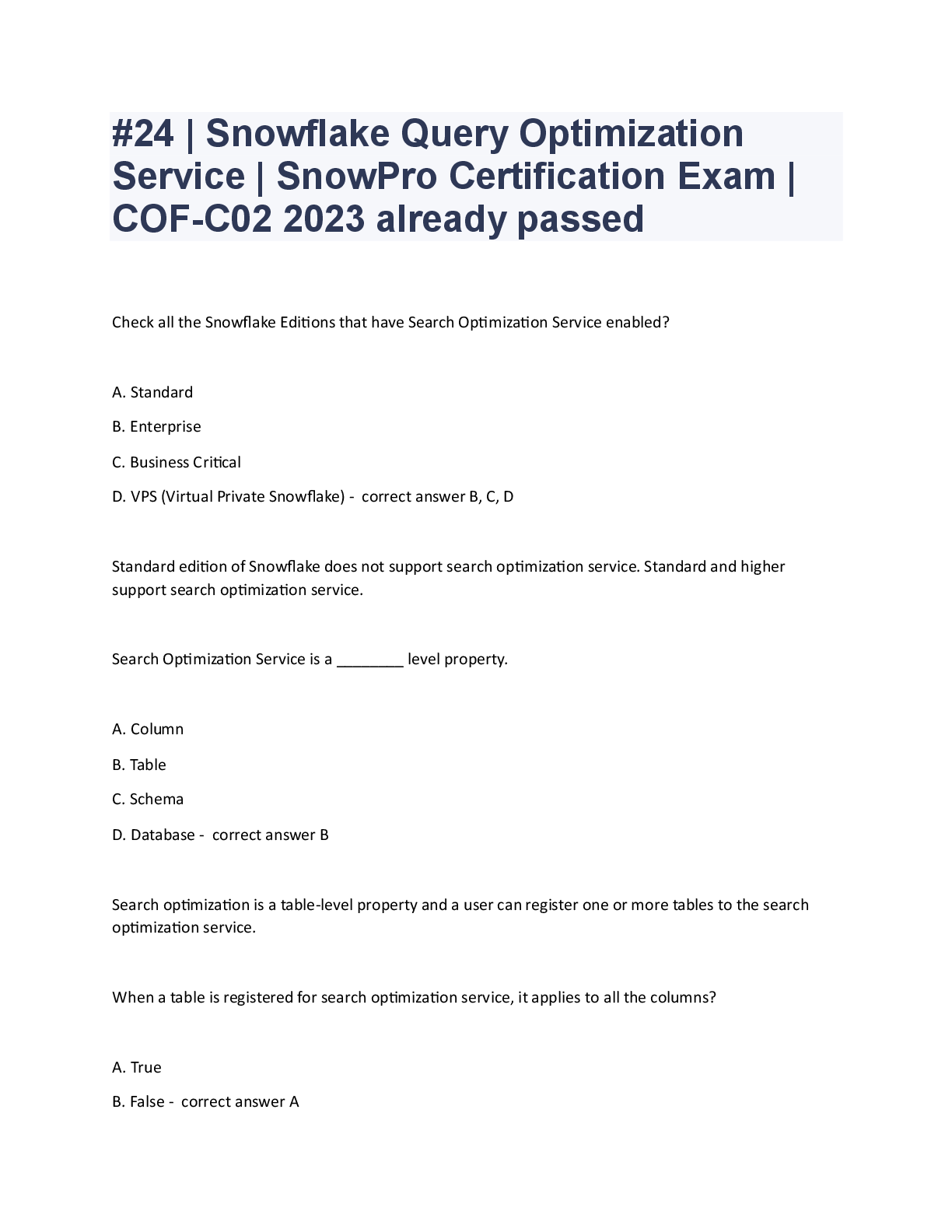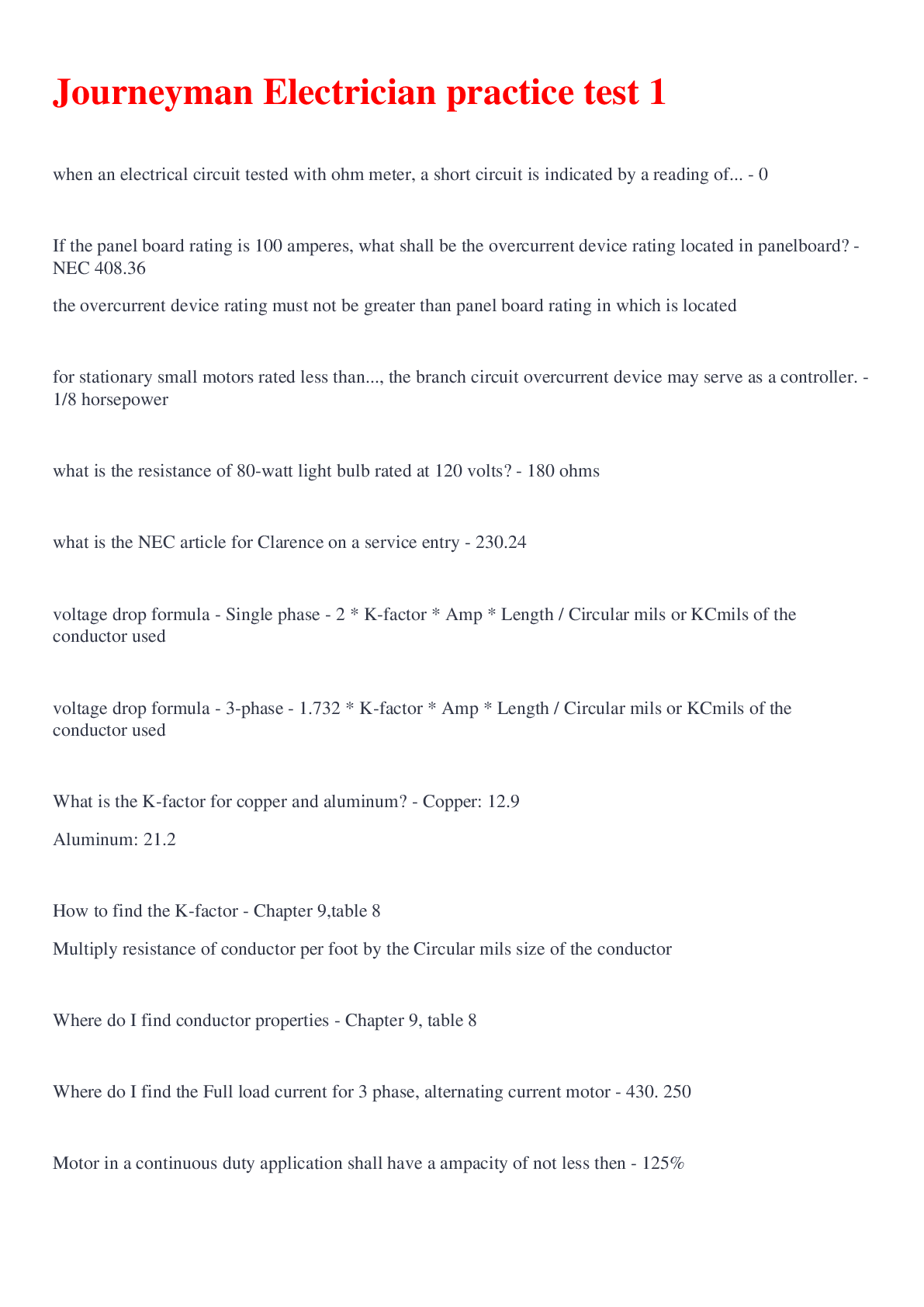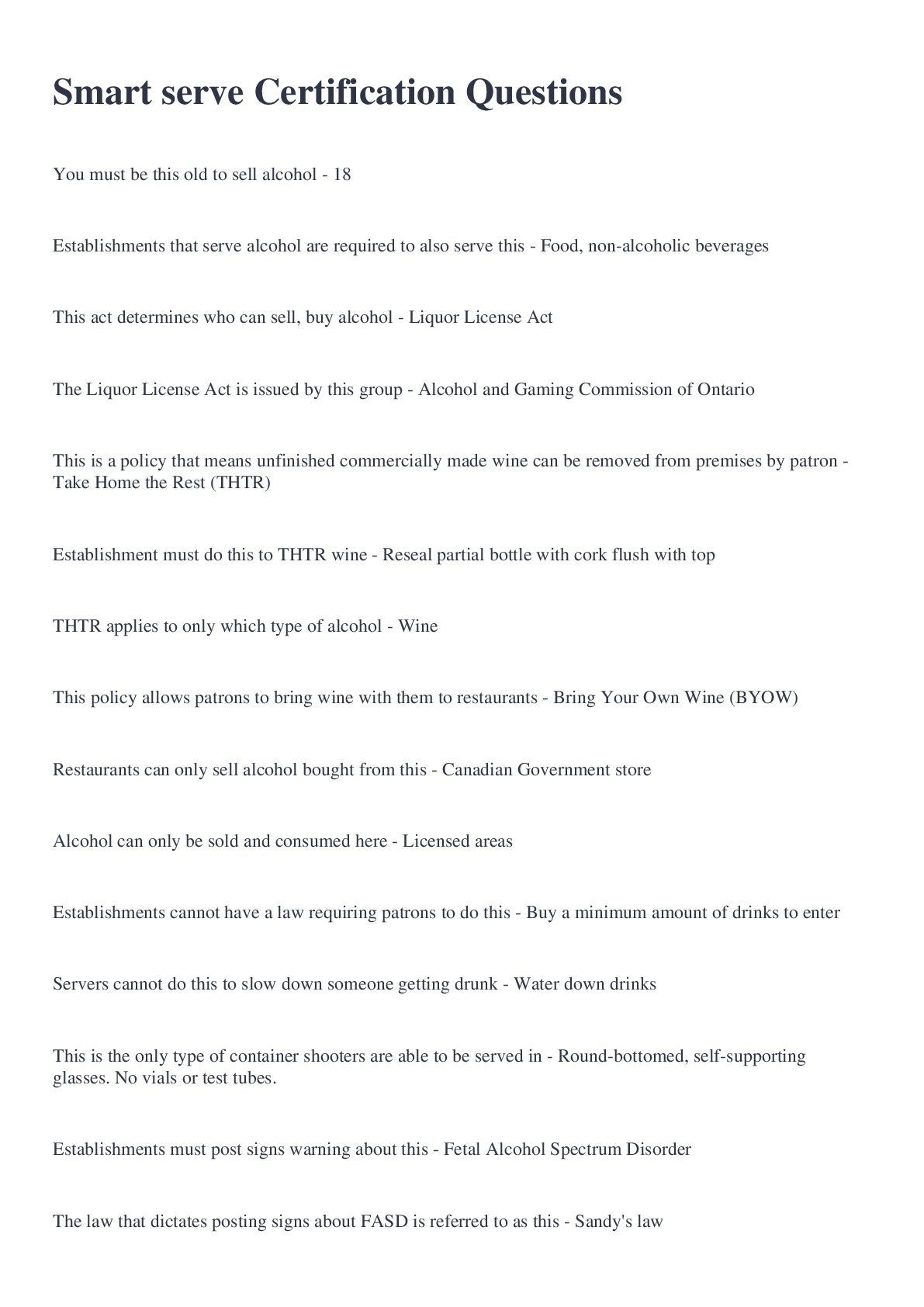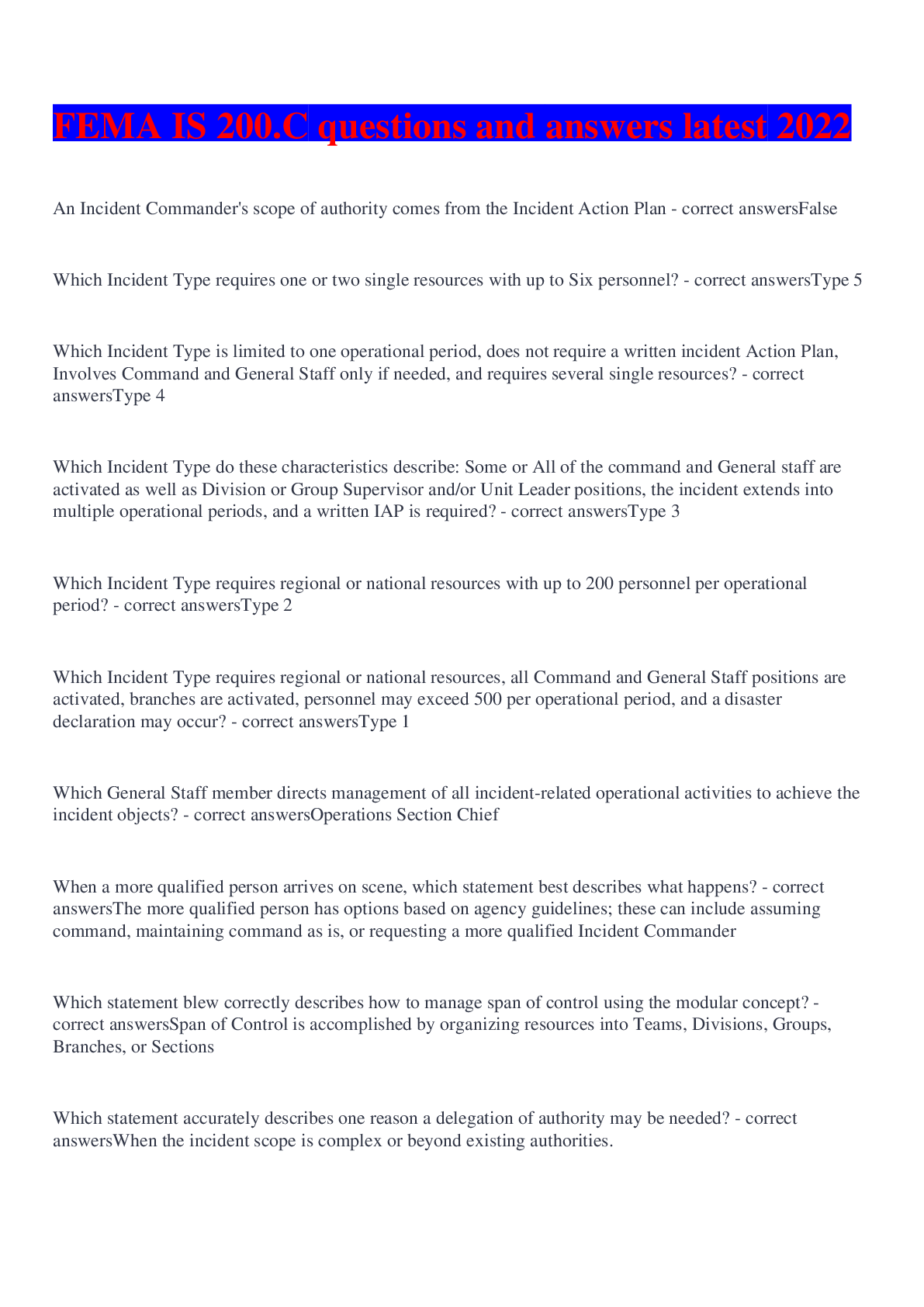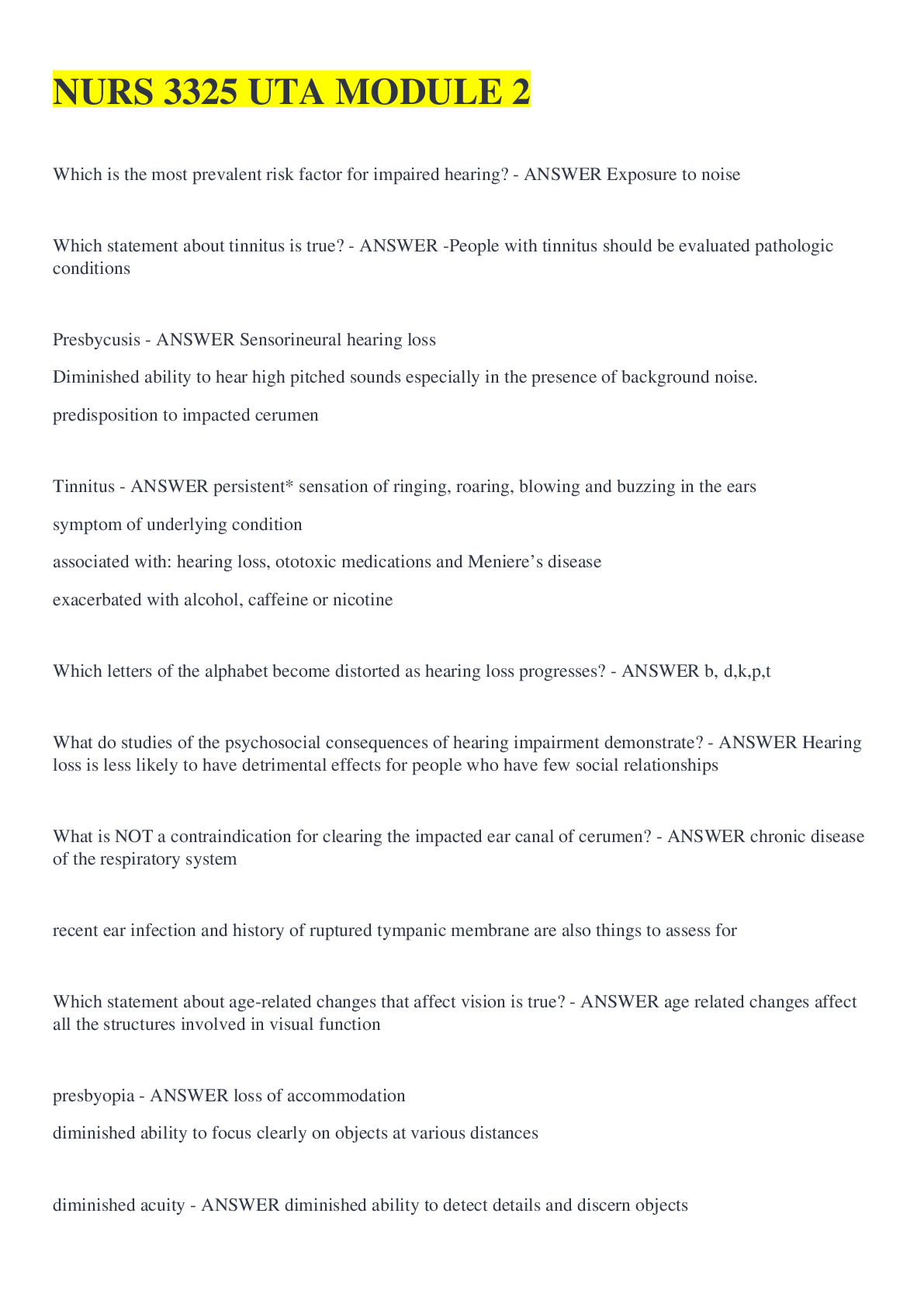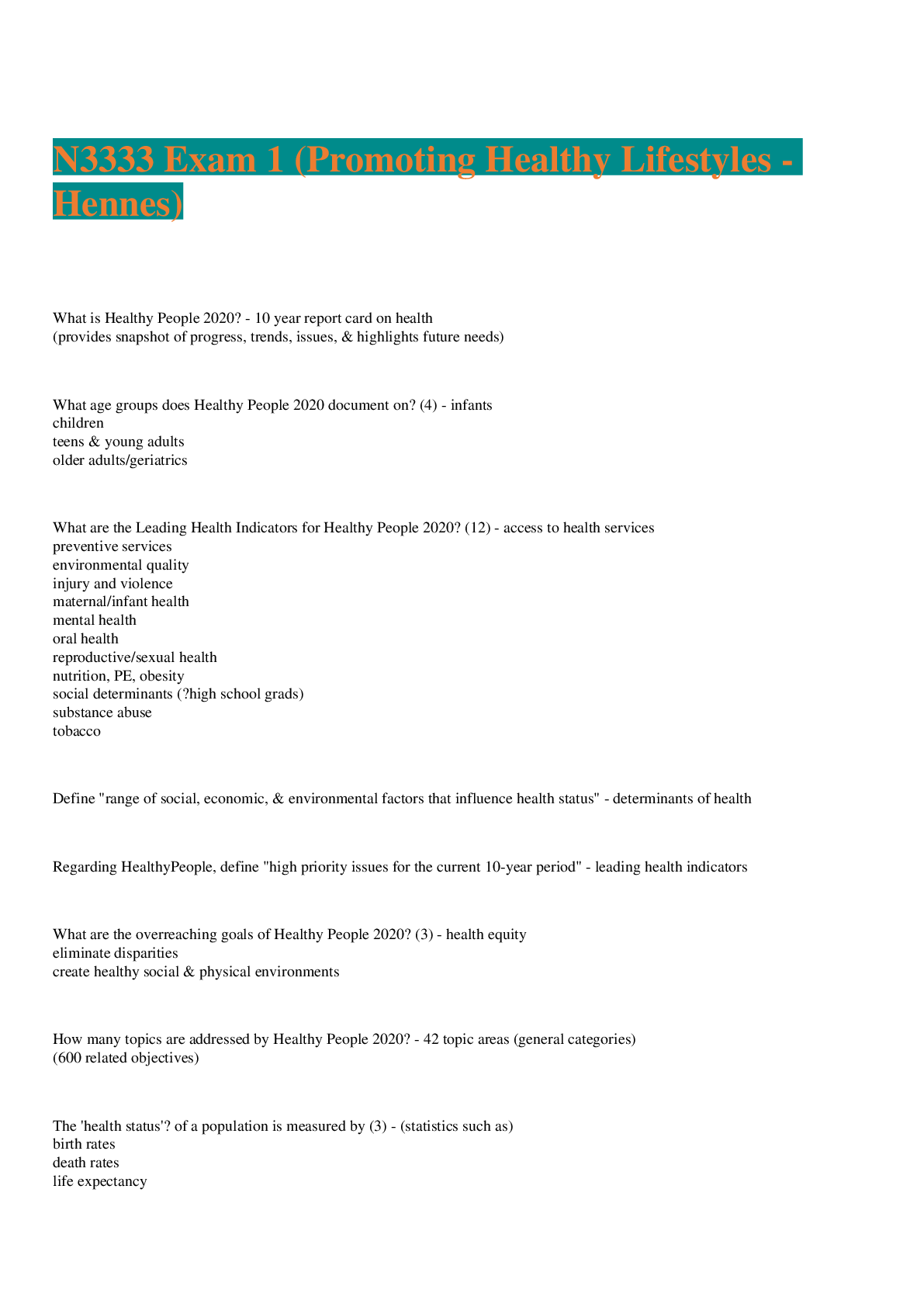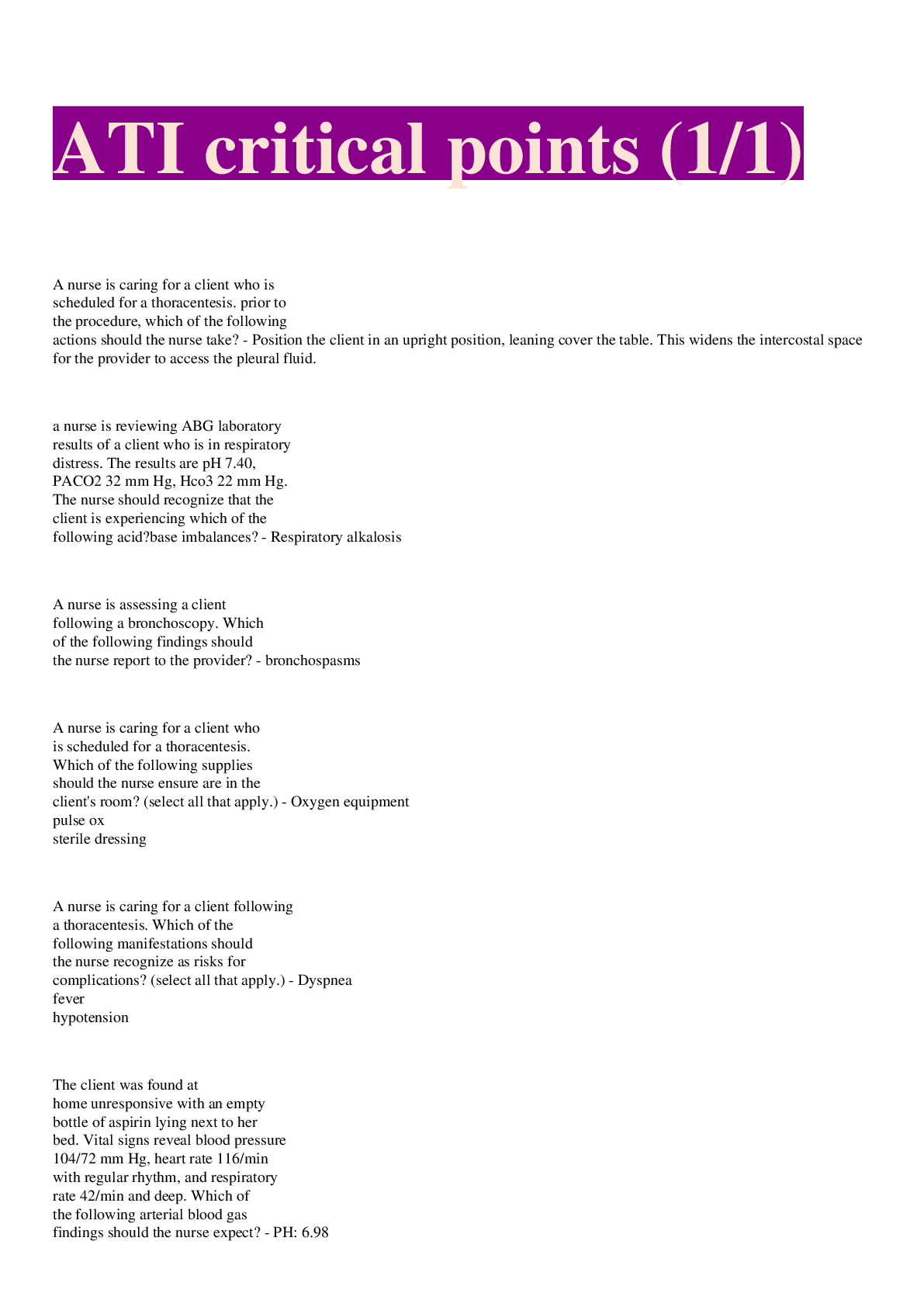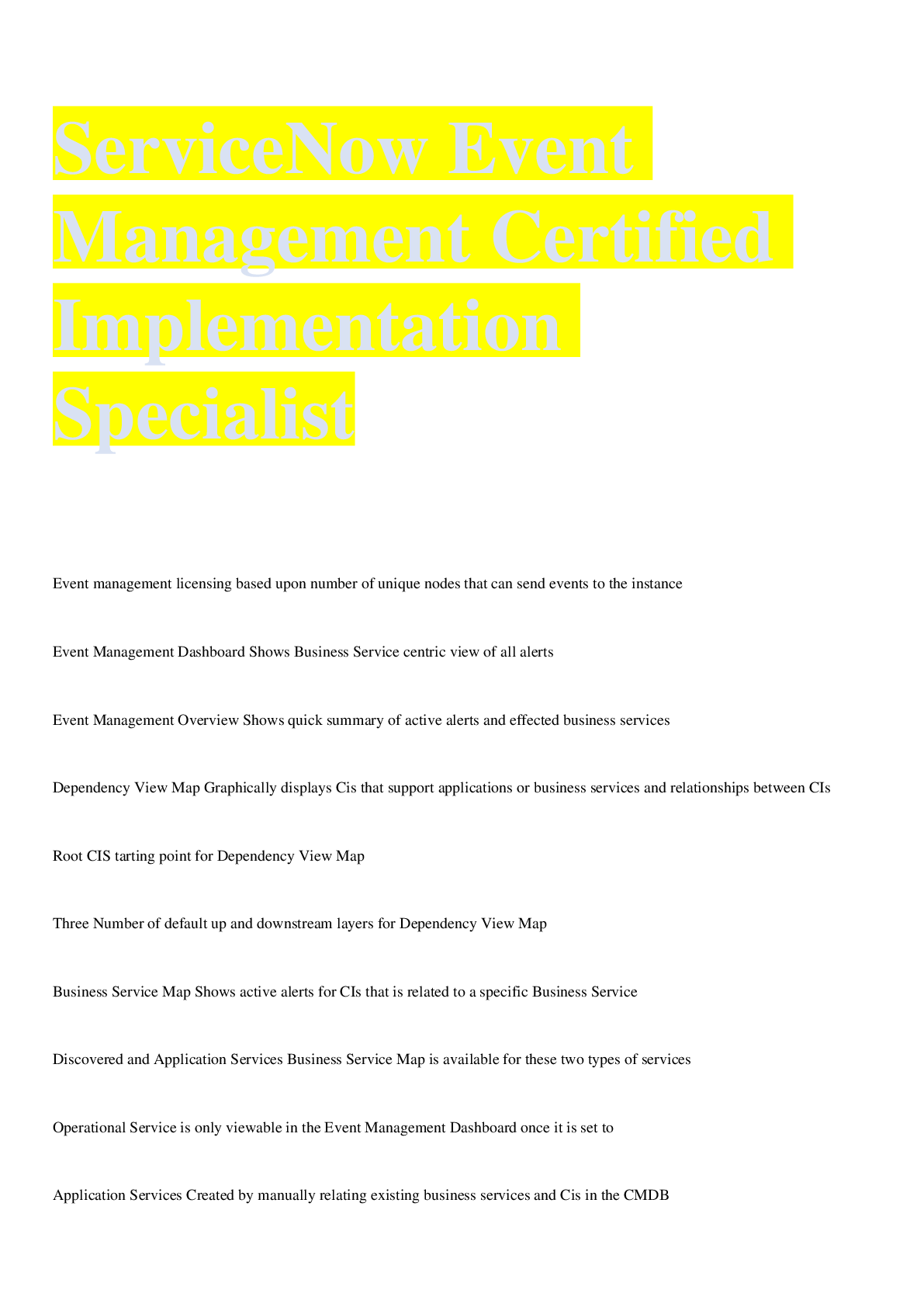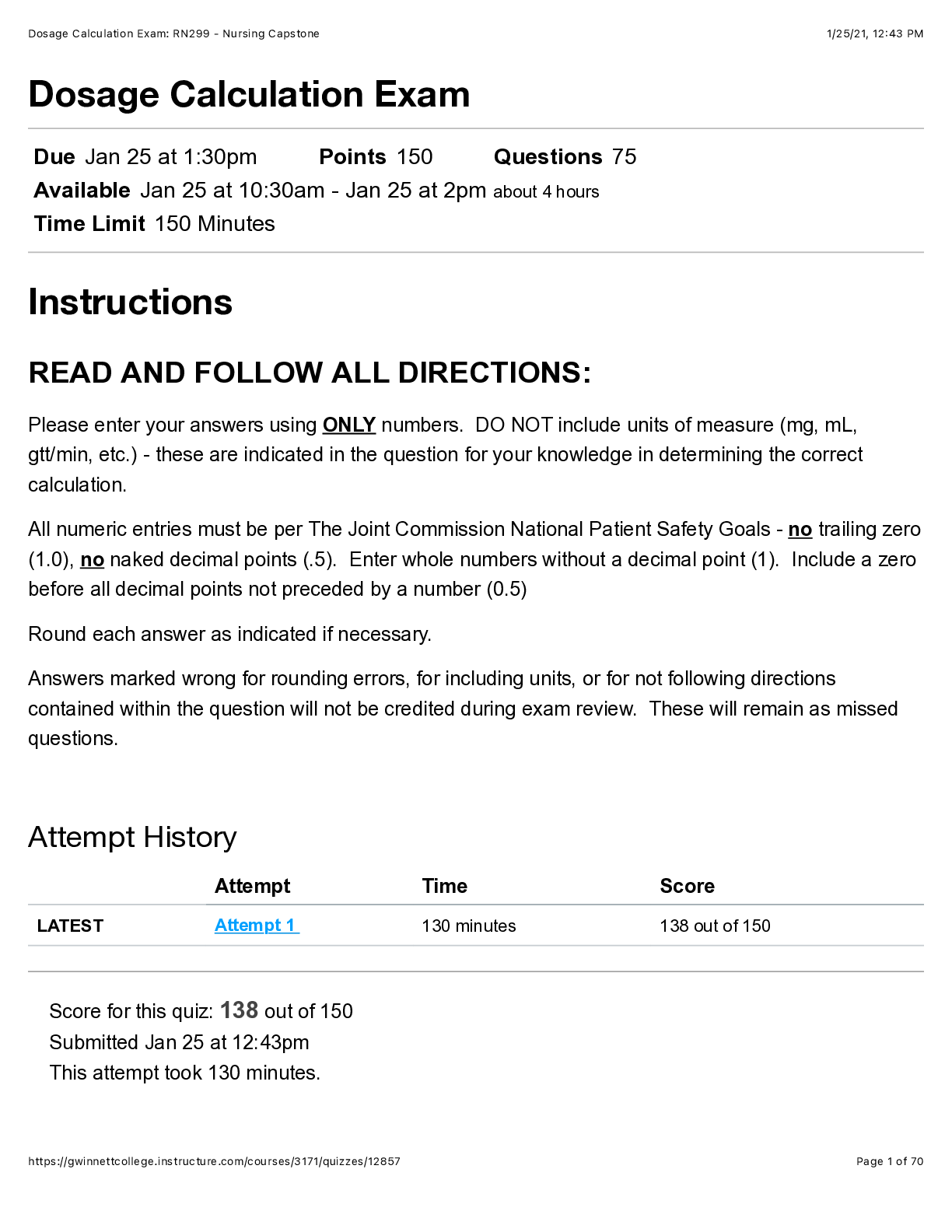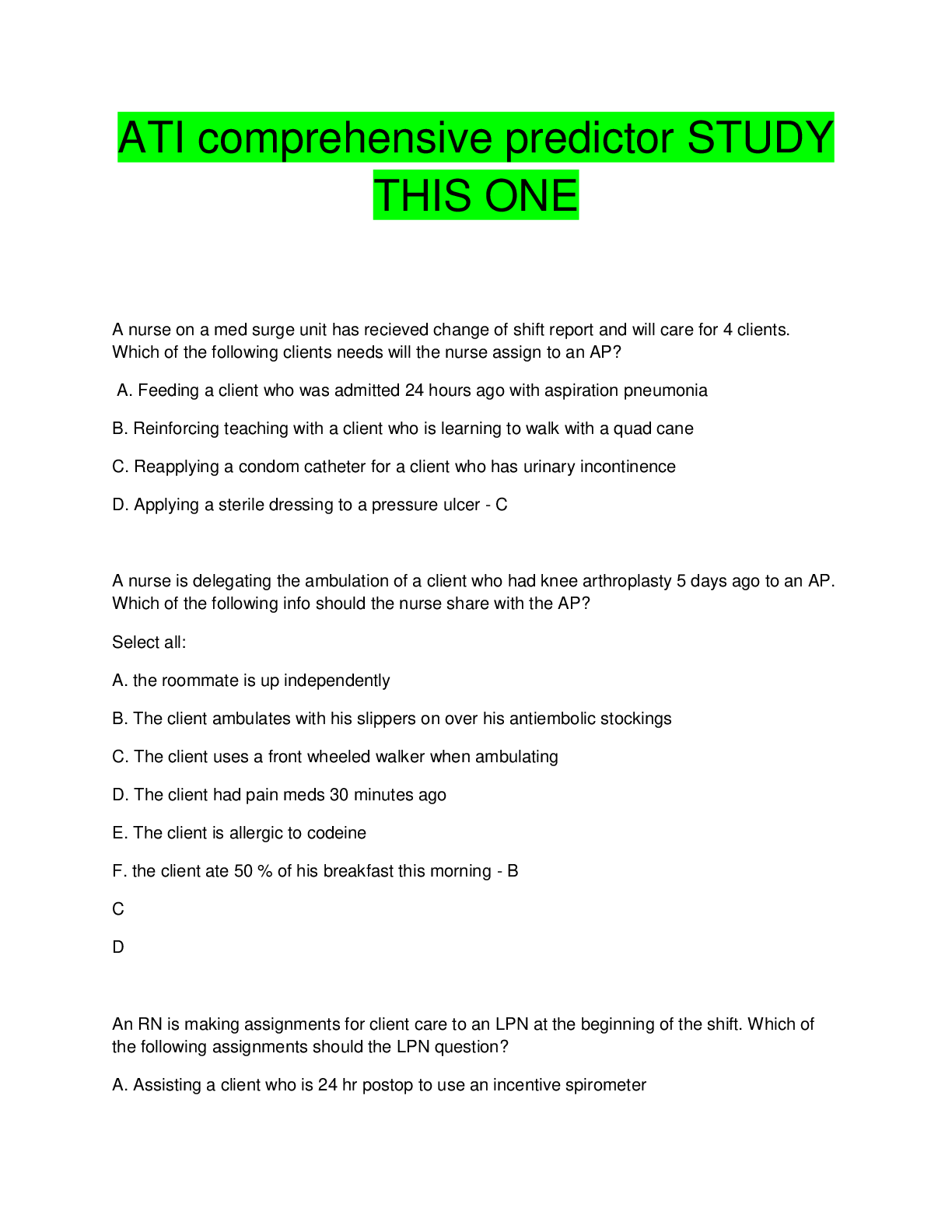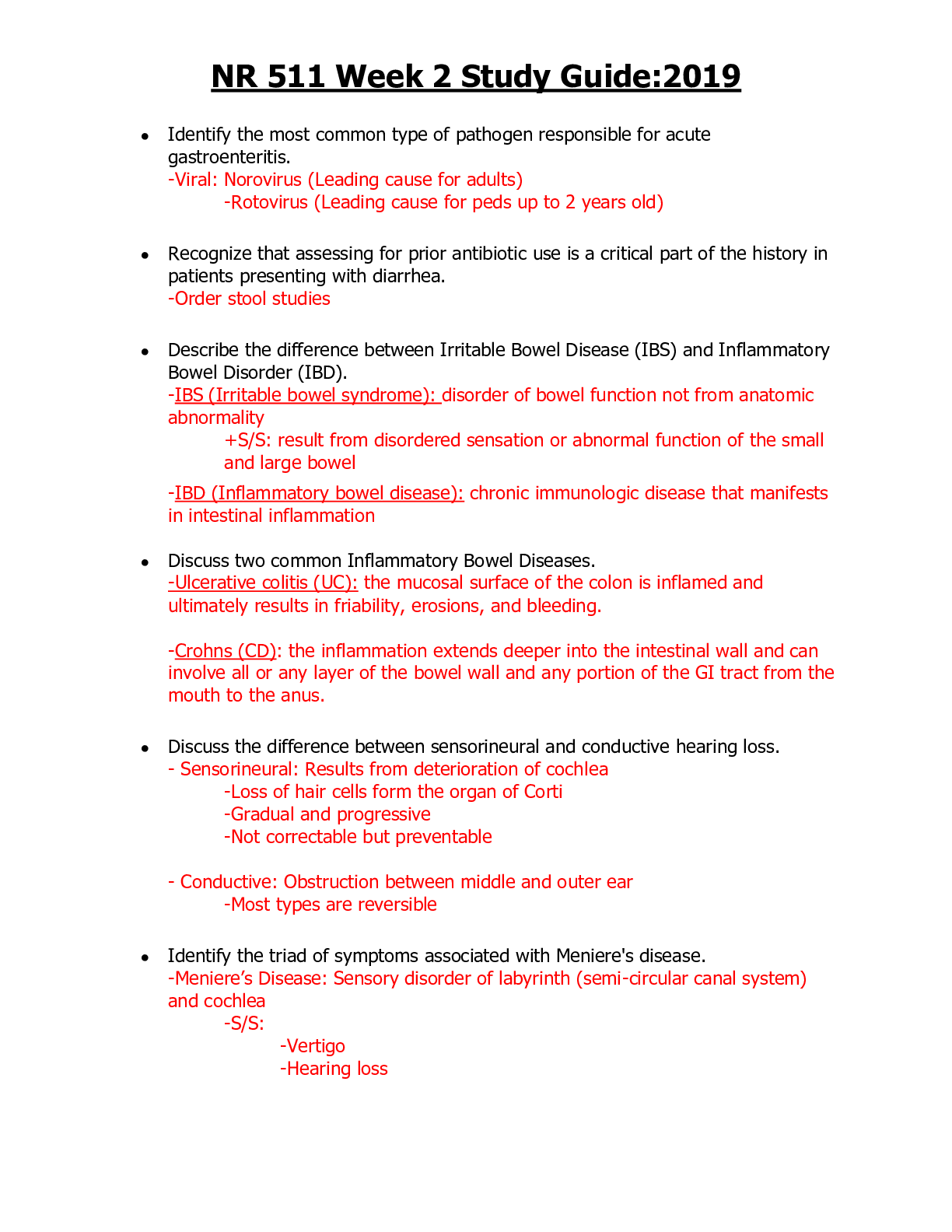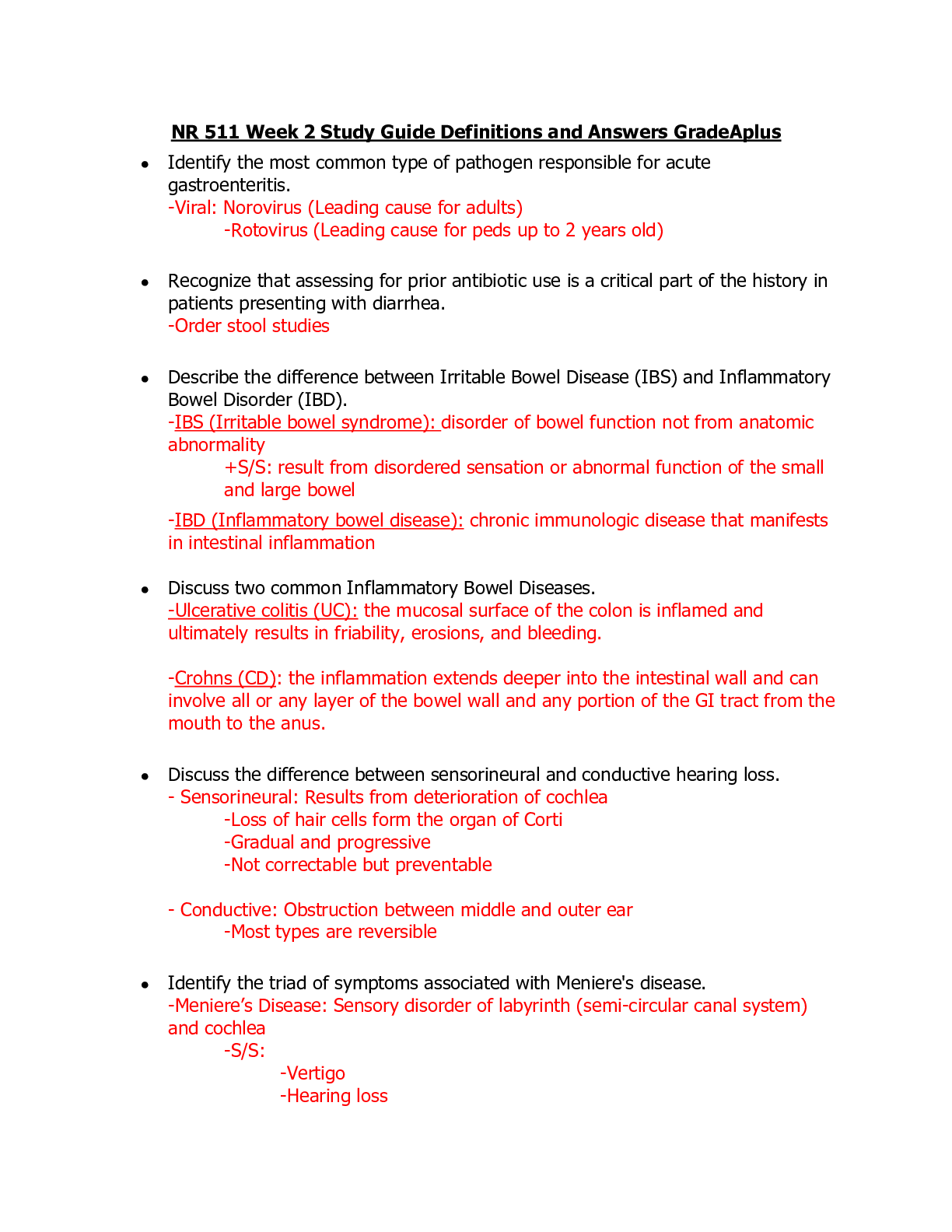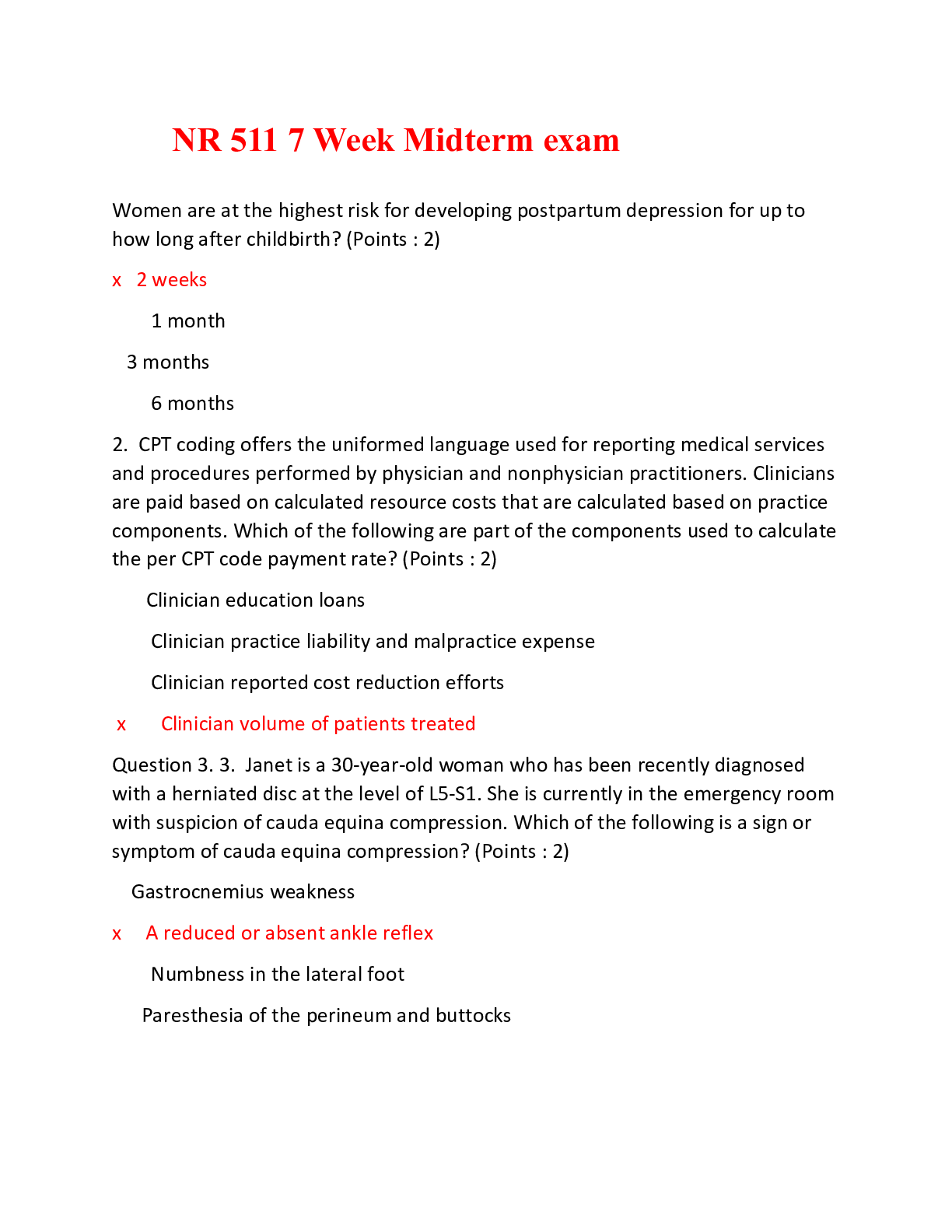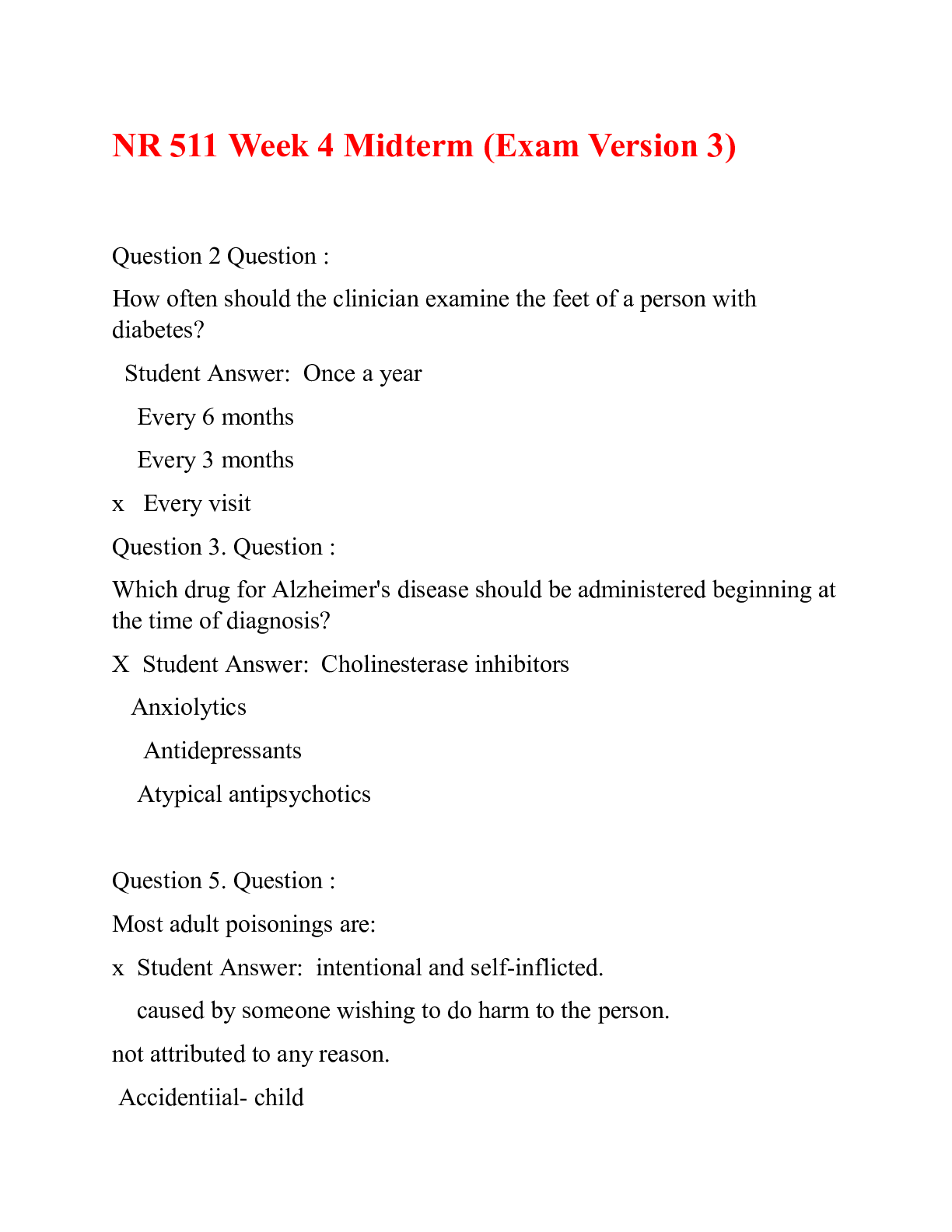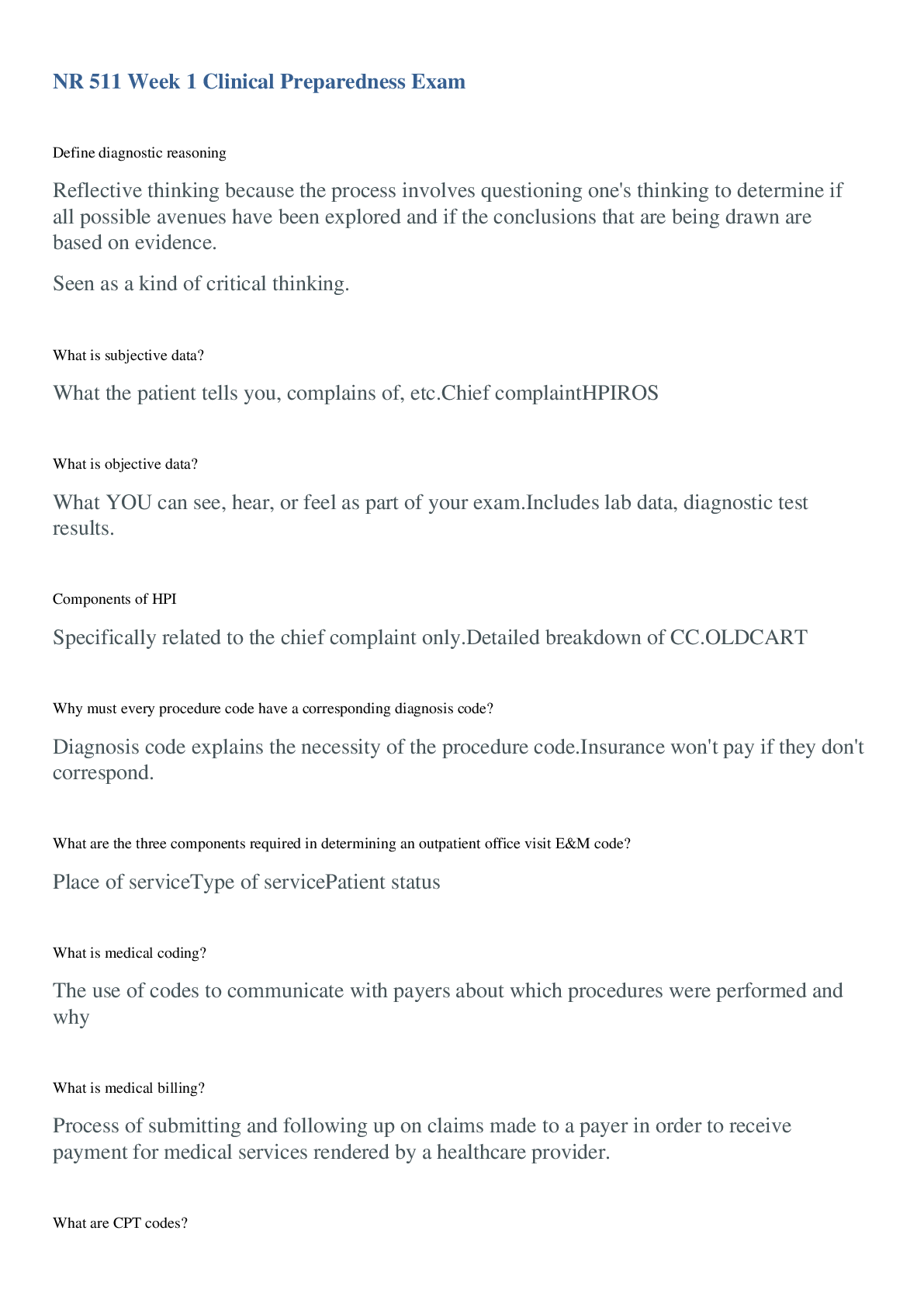Exam (elaborations) NR 511 WEEK 7 ASSIGNMENT
Document Content and Description Below
NR 511 WEEK 7 ASSIGNMENT Transcription for CPG GERD Hello Dr. and Class, my name is and I will be presenting clinical practice guidelines for Gastroesophageal reflux disease (GERD) Slide #1 Clinical P... ractice Guidelines. Gastroesophageal reflux disease or GERD Gastroesophageal reflux disease (GERD) is one of the most common diseases encountered by the gastroenterologist and is equally as common in the primary care setting. This presentation will provide a summary of GERD and its clinical presentation, and recommendations to diagnosis and how to manage the disease. Slide #2 Disease definition GERD defined as symptoms or complications resulting from the reflux of gastric contents into the esophagus or beyond, into the oral cavity (including larynx) or lung (DeVesty, & Heering, 2018). Slide # 3 Prevalence of GERD is based primarily on the typical symptoms of heartburn and regurgitation. Estimated that 10%-20% of adults have GERD, over 8.9 million primary care visits annually. But prevalence of GERD is unknown. It occurs most often in adults older than 40 yo. Same incidence between men and women. Except experienced more in women during pregnancy. Clinically troublesome heartburn is seen in about 6% of the population (Katz, Gerson, & Vela, 2013) Slide #4 Pathophysiology GERD is caused by the anatomical malfunction of the lower esophageal sphincter (LES) which is located at the bottom of the esophagus. LES is a muscle that is located at the end of the esophagus which is responsible for peristalsis and closes to prevent acidic stomach content from moving back to the esophagus. Esophageal reflux occurs when the gastric volume increases such as a large meal or the intra-abdominal pressure increases as such during pregnancy. It can also occur when the sphincter tone of the Lower Esophageal Sphincter is decreased by the use of caffeine or when the Lower Esophageal Sphincter undergoes inappropriate relaxation. As the esophagus becomes inflamed with repeated exposure to gastric acid, it cannot eliminate the refluxed material as quickly or efficiently, prolonging the duration of the contact with each subsequent exposure (May, Rao, Dipiro, Talbert, Yee, Matzke, Wells, Posey, 2014). Slide #5 Clinical Presentation Include heartburn, regurgitation [Show More]
Last updated: 2 years ago
Preview 1 out of 110 pages

Buy this document to get the full access instantly
Instant Download Access after purchase
Buy NowInstant download
We Accept:

Reviews( 0 )
$8.00
Can't find what you want? Try our AI powered Search
Document information
Connected school, study & course
About the document
Uploaded On
Mar 15, 2022
Number of pages
110
Written in
Additional information
This document has been written for:
Uploaded
Mar 15, 2022
Downloads
0
Views
60

